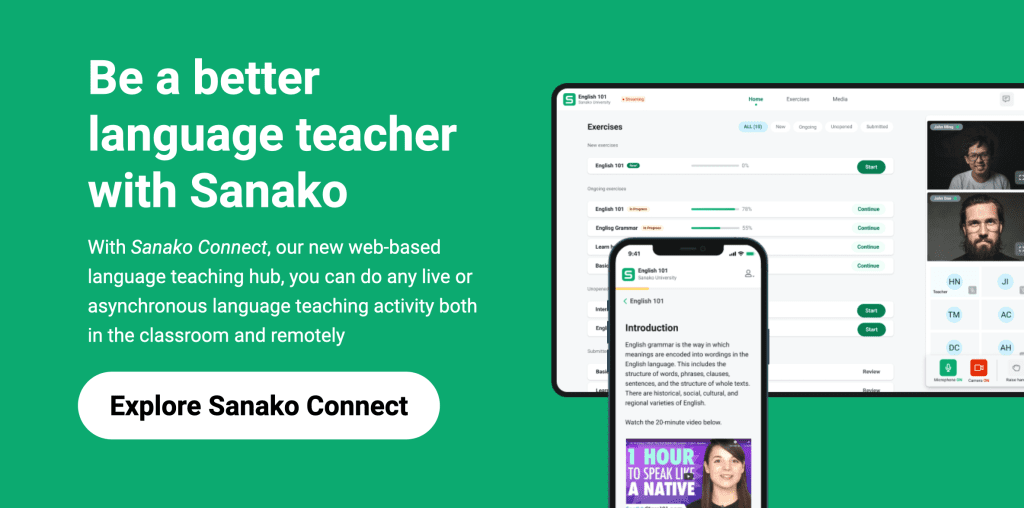There is a close relationship between creativity and learning: both manifest themselves when people have the opportunity to experiment, express their curiosity and engage in original activity without fear of being judged. That is why a creative approach will make your language classes more enriching and effective.
The role of creativity in language learning
What makes a language class a place open to creativity?
Let’s think about it for a moment. What stimulates us in pursuing creative activities? Motivation, the desire to experiment, the satisfaction one gets from stimulating and training different physical and mental skills.
But all these elements do not only manifest themselves when we decide to dedicate ourselves to digital drawing, painting, or learning to play the electric guitar. These stimuli are also fundamental when we open our minds to a new language. After all, who would be driven by the desire to learn new words, assimilate bizarre idioms or try to understand a foreign culture through language without a good dose of imagination, open-mindedness and adaptability?
Creativity is one of the most valuable tools available to language teachers, as it enables them to engage students on a cognitive and emotional level that is much deeper and more meaningful than a purely theoretical-grammatical one.
Introducing creative learning activities into your language classroom is not only fun in itself, but also an excellent strategy for consolidating your students’ language and critical thinking skills at the same time.
“Creativity has also been linked to levels of attainment in second language learning. Many of the language tasks favoured by contemporary language teaching methods are believed to release creativity in learners – particularly those involving student-centred, interaction-based, and open-ended elements, and are therefore in principle ideally suited to fostering creative thinking and behaviour on the part of learners” (Burton, 2010)
So, how can you introduce a bit of creativity into your language teaching approach? Check out our three ideas below!
1. Establish a creativity-welcoming environment
We can’t deny it, some people are born creative. While it is entirely possible to develop one’s creative thinking, for some students it may take longer than others. Therefore, it is important first of all to work on the environment because, as noted by Alan Melay and Nick Peachey, “creativity in teaching does not simply happen in a vacuum. We need to create favourable conditions for it”.
What makes for a creative learning environment? Open-mindedness, absence of prejudices, willingness to collaborate, stimulating physical space – these are characteristics that, within a language classroom, encourage students to express themselves freely. During the early stage of language acquisition, the important thing is to guide the students to communicate their thoughts and ideas, leaving aside the correctness of the way they express them in the targeted language.
2. Use the creativity of others to enhance the creativity of your own lessons
Nowadays, we have the best expression of human creativity within reach in one click, why not use them in the language class? Have your learners read songs’ lyrics, or examine together the language used in a TV series. If you are dealing with a rather large class and you are afraid that some pupils might become disinterested, develop a role-game so that everyone has a part to play.
3. Consider embodied learning
What if your students don’t want anything to do with listening to podcasts or reading books in the target language? You don’t have to rule out creativity just yet. The set of techniques known as embodied learning might be exactly what you are looking for!
Engage students in language learning activities that require them to perform a physical action and use the targeted language at the same time. Whether it’s an energy break, a field trip, or group activities, try to harness the benefits of embodied cognition to strengthen your students’ fluency.
In conclusion, the language learning experience can benefit enormously from implementing new and interactive teaching activities. Regardless of the type of learning content you prefer to use, making your lessons creative means, above all stimulating your students’ curiosity, encouraging them to communicate, and creating opportunities to interact with them and with each other.
You don’t have to be a great artist to be creative. You just have to be a dedicated language teacher!
Sanako is the global-leader in teacher-led language instruction technology. Our software supports language teachers to deliver inspiring and effective lessons. If you’d like to find out more about how Sanako’s dedicated language teaching software could transform your approach to language teaching, click here or the banner below to learn more!

